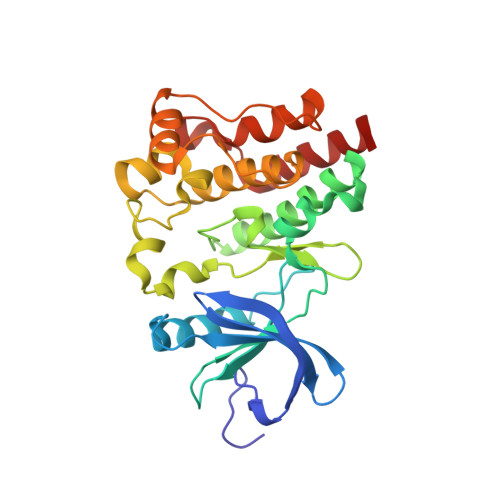Discovery of a Potent BTK Inhibitor with a Novel Binding Mode by Using Parallel Selections with a DNA-Encoded Chemical Library.
Cuozzo, J.W., Centrella, P.A., Gikunju, D., Habeshian, S., Hupp, C.D., Keefe, A.D., Sigel, E.A., Soutter, H.H., Thomson, H.A., Zhang, Y., Clark, M.A.(2017) Chembiochem 18: 864-871
- PubMed: 28056160
- DOI: https://doi.org/10.1002/cbic.201600573
- Primary Citation of Related Structures:
5U9D - PubMed Abstract:
We have identified and characterized novel potent inhibitors of Bruton's tyrosine kinase (BTK) from a single DNA-encoded library of over 110 million compounds by using multiple parallel selection conditions, including variation in target concentration and addition of known binders to provide competition information. Distinct binding profiles were observed by comparing enrichments of library building block combinations under these conditions; one enriched only at high concentrations of BTK and was competitive with ATP, and another enriched at both high and low concentrations of BTK and was not competitive with ATP. A compound representing the latter profile showed low nanomolar potency in biochemical and cellular BTK assays. Results from kinetic mechanism of action studies were consistent with the selection profiles. Analysis of the co-crystal structure of the most potent compound demonstrated a novel binding mode that revealed a new pocket in BTK. Our results demonstrate that profile-based selection strategies using DNA-encoded libraries form the basis of a new methodology to rapidly identify small molecule inhibitors with novel binding modes to clinically relevant targets.
Organizational Affiliation:
X-Chem Pharmaceuticals, 100 Beaver Street, Waltham, MA, 02453, USA.



















